Travel Guide: La Paz
Questions This Article Answers
What are the must-see museums in La Paz?
Where can I experience the unique landscapes near La Paz?
Where can I buy traditional arts and crafts in La Paz?
How can I visit Lake Titicaca?
Where can I learn more about Incan culture in La Paz?
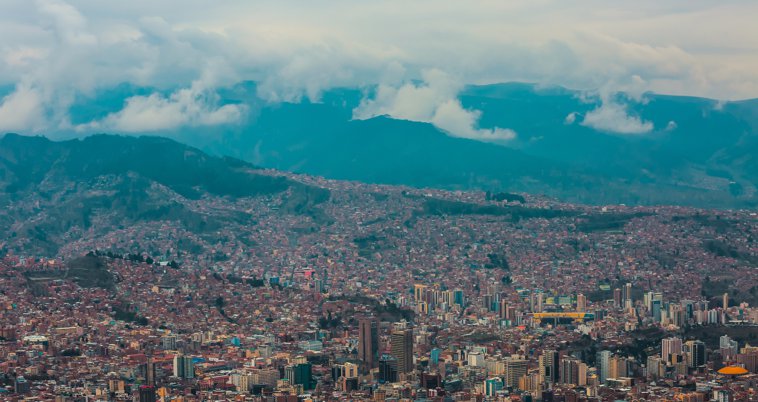
Top 9 Things to See in La Paz
1. A Magical Market
A good place to start your tour of La Paz is El Mercado de las Brujas(The Witches' Market). In this somewhat surreal market, local yatiri(healers) sell an array of unique items, from remedios tradicionales(traditional remedies) and pociones(potions) to other essentials used in religious rituals such as ranas secas(dried frogs), plumas de lechuza(owl feathers), and sullus, dried llama fetuses used as offerings to Pachamama(Pachamama), or Mother Earth.
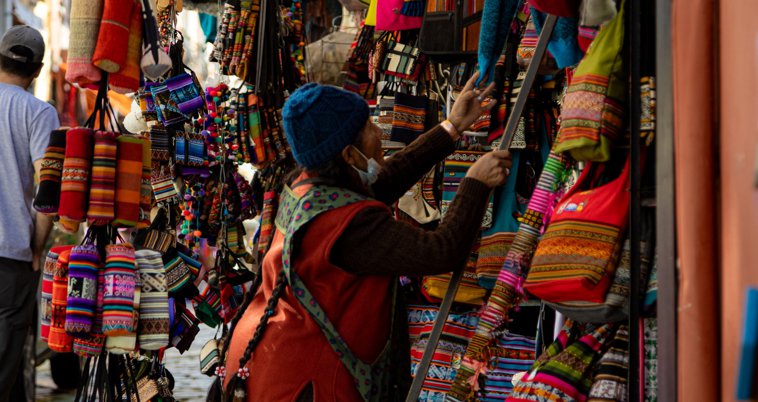 If spells and rituals are not your thing, don’t worry. You’ll also find textiles(textiles), joyería(jewelry), and artesanías hechas a mano(handcrafted goods) in this unique market.
If spells and rituals are not your thing, don’t worry. You’ll also find textiles(textiles), joyería(jewelry), and artesanías hechas a mano(handcrafted goods) in this unique market.
2. Ride in a Cable Car
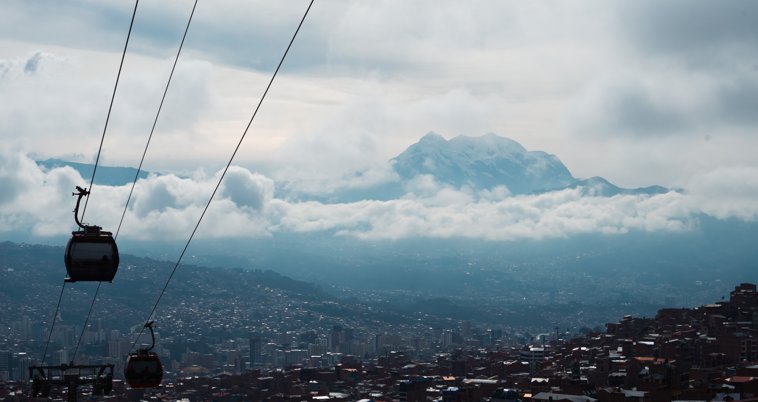 La Paz's Mi Teleférico(literally, My Cable Railway) is one of the world's highest cable car networks and a tourist attraction in its own right. Stretching over 10 kilometers, it connects various parts of the city, offering riders breathtaking views of La Paz and the adjoining city of El Alto(El Alto).
La Paz's Mi Teleférico(literally, My Cable Railway) is one of the world's highest cable car networks and a tourist attraction in its own right. Stretching over 10 kilometers, it connects various parts of the city, offering riders breathtaking views of La Paz and the adjoining city of El Alto(El Alto).
3. Walk on the Moon
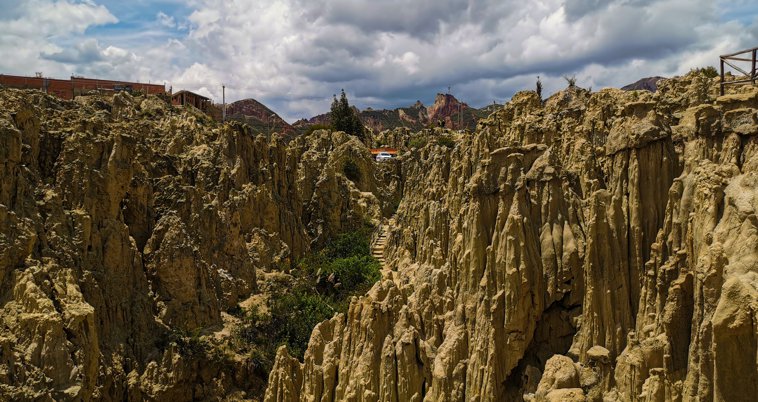 Just a short drive from the city's center lies the Valle de la Luna(Moon Valley), a geological formation that looks as if it were taken out of a science fiction film. This valley, with its stark, moon-like landscape, is formed by the erosion of a mountain, leaving behind a maze of cañones(canyons) and towering spires. The soil is rich in minerals and varies in color from beige to reddish, which adds to the surreal appearance of the landscape.
Just a short drive from the city's center lies the Valle de la Luna(Moon Valley), a geological formation that looks as if it were taken out of a science fiction film. This valley, with its stark, moon-like landscape, is formed by the erosion of a mountain, leaving behind a maze of cañones(canyons) and towering spires. The soil is rich in minerals and varies in color from beige to reddish, which adds to the surreal appearance of the landscape.
4. Tiwanaku
If you have time for a day trip, then the ancient site of Tiwanaku is a must-see. Located near the southern shore of lago Titicaca(Lake Titicaca), Tiwanaku, which is often spelled Tiahuanaco(Tiahuanaco) or Tiahuanacu(Tiahuanacu) in Spanish, was the center of a culturally rich pre-Incan civilization that reached its peak between 500 and 1000 AD.
 Visitors to the site can tour several key structures that are notable for their architectural sophistication, including the Templo de Kalasasaya(Kalasasaya Temple) and the Puma Punku(Puma Punku), an area where archaeologists have found large stone blocks cut with such precision that they interlock perfectly.
Visitors to the site can tour several key structures that are notable for their architectural sophistication, including the Templo de Kalasasaya(Kalasasaya Temple) and the Puma Punku(Puma Punku), an area where archaeologists have found large stone blocks cut with such precision that they interlock perfectly.
Tiwanaku is also famous for its striking monolithic statues. The most famous one—La Puerta del Sol(The Gateway of the Sun)—is a gateway carved from a single piece of stone with Tiwanaku iconography carved into its walls.
5. Lago Titicaca
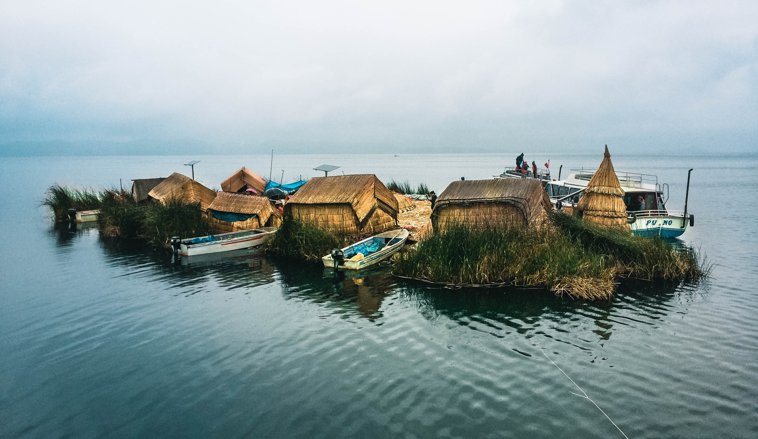 Not far from Tiwanaku is the famous lago Titicaca. Sandwiched between Peru and Bolivia, Titicaca is the largest freshwater lake in South America and the highest navigable body of water in the world. The lake’s islands, especially isla del Sol(Island of the Sun) and isla de la Luna(Island of the Moon), are considered sacred, with several ruins and temples dating back to the Incan and pre-Incan eras.
Not far from Tiwanaku is the famous lago Titicaca. Sandwiched between Peru and Bolivia, Titicaca is the largest freshwater lake in South America and the highest navigable body of water in the world. The lake’s islands, especially isla del Sol(Island of the Sun) and isla de la Luna(Island of the Moon), are considered sacred, with several ruins and temples dating back to the Incan and pre-Incan eras.
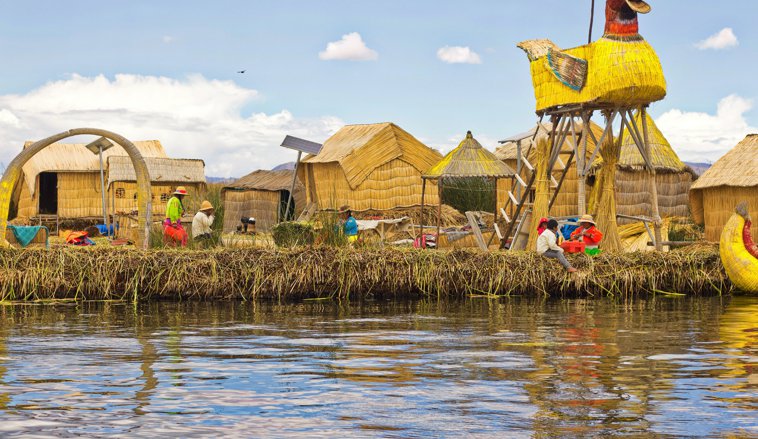 Another highlight is the islas flotantes de los Uros(the floating islands of the Uros) on the Peruvian side of the lake. These man-made islands, constructed from cañas de totora(totora reeds), are home to the Uros(Uros) people.
Another highlight is the islas flotantes de los Uros(the floating islands of the Uros) on the Peruvian side of the lake. These man-made islands, constructed from cañas de totora(totora reeds), are home to the Uros(Uros) people.
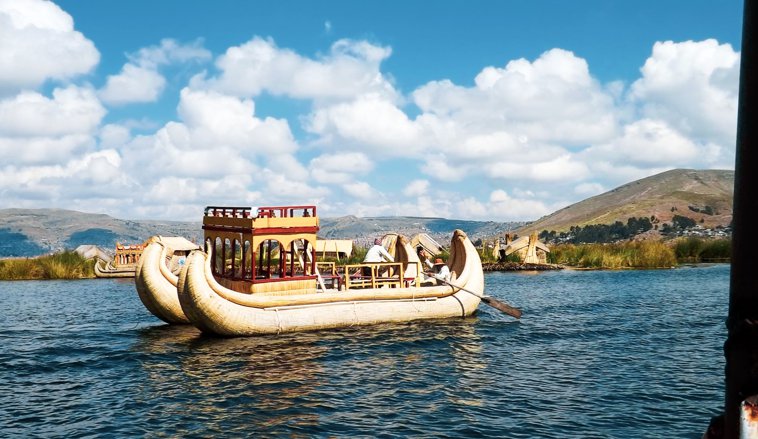 The gateway to lago Titicaca on the Bolivian side is Copacabana(Copacabana). A charming little town, it offers a variety of tourist facilities, including hotels, restaurants, and cafes.
The gateway to lago Titicaca on the Bolivian side is Copacabana(Copacabana). A charming little town, it offers a variety of tourist facilities, including hotels, restaurants, and cafes.
If you're planning a visit to lago Titicaca, here are some vocabulary words you might find useful:
6. Murillo Square
Located in the heart of La Paz, Plaza Murillo(Murillo Square) is surrounded by iconic buildings like the Catedral Metropolitana Nuestra Señora de La Paz(Cathedral Basilica of Our Lady of Peace), the Palacio Legislativo(Legislative Palace), and the Palacio de Gobierno(Government Palace), also known as the Palacio Quemado(Burnt Palace) due to a huge fire that almost destroyed the building in 1875.
Additionally, the palomas(pigeons) at Plaza Murillo have become almost as much of an attraction as the historical and political landmarks surrounding them. The birds are a common sight, often seen in large numbers, and are used to being around humans, which has led them to be quite tame and unafraid of approaching people.
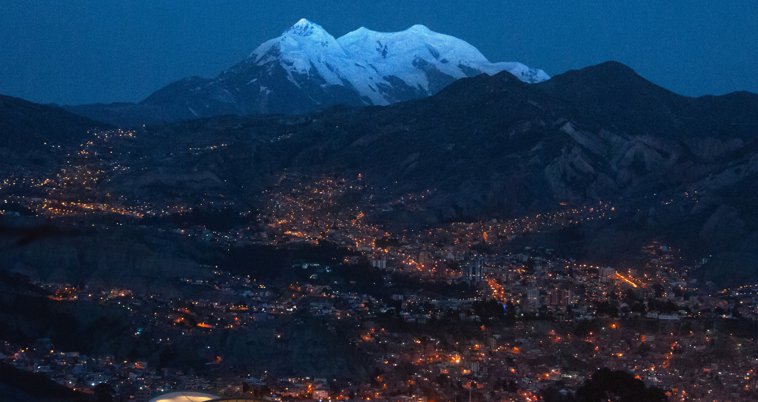
Local Fair
Should you find yourself in La Paz in late January or early February, you're set to experience the captivating Feria de las Alasitas(Alasitas Fair). The fair starts on January 24th, the feast day of Ekeko, the god of abundance, and stretches into February.
During the fair, artisans showcase tiny houses, vehicles, and even passports, each a representation of the desires and goals for the new year. It's a festive display of Bolivian culture and a window into the local way of life!
7. Coca Museum
The small Museo de la Coca(Coca Museum), on Linares Street, offers an in-depth exploration of the coca plant and its cultural and historical importance in the Andean region.
8. Ethnography and Folklore Museum
Another good museum to visit is the Museo de Etnografía y Folklore(Ethnography and Folklore Museum). This museum houses an extensive collection of artifacts that represent the various ethnic groups and cultures within Bolivia, including masks, featherwork, musical instruments, textiles, and everyday objects that reflect the lifestyles and artistic expressions of different communities.
9. Death Road
For the thrill-seekers, biking down the infamous Camino de la Muerte(Death Road) is a must. This narrow road with steep drops offers adrenaline-pumping adventure and spectacular views.

We hope you enjoyed these tips for visiting La Paz!
¡Buen viaje!(Have a great trip!)
Interested in more Latin American adventures? Check out these articles for inspiration:











